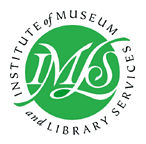 |
 | |
| Preserving and Digitizing Plant Images: Linking Plant Images and Databases for Public Access Completed November 2000 | ||
Specimens |
| What is an herbarium?
An herbarium is a collection of pressed and dried plants or parts of plants, with accompanying information, which permanently documents the occurrence of that plant at a particular place and point in time. In general, each specimen can be thought of as representing a unique individual, sampled from among the many trillions of plants that exist on the earth. In addition to the pressed and dried specimens, special collections of liquid-preserved parts and wood for anatomical studies, microscope slides and material specifically collected for chemical analysis are also part of a modern herbarium collection. Herbarium specimens provide much of the basic raw data for our understanding of what are plant species, where they are found and some of their useful properties. The specimens listed here are representative of the 5 million specimens (4.7 million vascular plants and 300,000 bryophytes) in the Gardenís herbarium. The following images are in multi-resolution JPEG2000 format and served to the web using the open source djatoka image server. Click on a link for a close-up view. |
 |
Maytenus magellanica (Lam.) Hook. f. |
| The Gardenís herbarium collection has a long history of development, with specimens dating from the middle of the 18th century. This specimen of Maytenus magellanicus Hook. f. (Celastraceae) was collected in Tierra del Fuego, Argentina in 1769 by Joseph Banks and Daniel Solander, the naturalists who accompanied Captain James Cook on his first voyage around the world. | |
 |
Asplenium dareoides Desv. |
| Charles Darwin, famous for his elaboration of evolutionary theory, developed many of his initial concepts while acting as the naturalist on the HMS Beagle. He collected many geological, zoological and botanical specimens during his voyage. This specimen of Asplenium dareoides Desv. was collected by him in December 1834 from Cerro Tres Montes in southern Chile. | |
 |
Fuchsia ayavacensis Kunth in H.B.K. |
| More than half of the Gardenís herbarium collection is from the New World and African Tropics. These are areas with very high diversity, yet remain some of the least known and explored parts of the earth. This fuchsia, (Fuchsia ayavacensis Kunth, Onagraceae), is a very attractive shrub from the cloud forests of Ecuador and is representative of the Gardenís efforts to document the diversity of Neotropical regions. | |
 |
Polygala exelliana Troupin |
| Tropical Africa, another region of great biological diversity, has been the focus of Garden research activities for many years. Tanzania, one of the countries where the Garden has collaborative projects, has many unique and threatened vegetation types. This milkwort (Polygala exelliana Troupin, Polygalaceae) is one of the attractive species found in east tropical Africa. | |
 |
Zea mays L. |
| The herbarium is a source of information on economically important plants. An extensive collection of corn (Zea mays L., Poaceae) from throughout the world has been assembled and is available for scholarly research. | |
 |
Echinopsis bridgesii Salm-Dyck |
| Although many small plants can be pressed in their entirety to make an herbarium specimen, most plants are too large for the entire plant to be pressed. However, even the largest and most unusual plants, like palms and cacti, can be made into high quality specimens by carefully selecting representative parts and making extensive notes. This sample of Echinopsis bridgesii Salm-Dyck comes from one of the interior, dry valleys in the Andes of Bolivia. | |
 |
Cucurbita foetidissima H.B.K. |
| The herbarium has an excellent representation of early collections made by the numerous exploring expeditions to western North America during the middle of the 19th Century. Thanks to the keen botanical interests of Dr. George Engelmann, who interacted closely with many of the expedition leaders, many specimens from these expeditions were sent to him for study. This specimen of gourd, Cucurbita foetidissima H.B.K. (Cucurbitaceae) was gathered along the upper Arkansas River by John Fremont on his third expedition to the west in 1845. | |
 |
Clematis fremontii S. Watson |
| The herbarium documents the flora of Missouri. This specimen of Fremontís Leather Flower, Clematis fremontii S. Watson (Ranunculaceae), is from one of the cedar glades in eastern Missouri. | |
 |
Lactoris fernandeziana Phil. |
| Many plant species are rare and/or endemic (restricted) to a very small geographic area. Lactoris fernandezianum Phil. is the only species of an entire plant family (Lactoridaceae). It is found only on the Juan Fernandez Islands in the Pacific Ocean west of Chile. | |
 |
Arisaema dracontium (L.) Schott |
| Herbarium specimens serve as documentation for changing ecological conditions that effect the distribution of plants. This specimen of Green Dragon (Arisaema dracontium (L.) Schott, Araceae) was collected as part of a vegetation study made to examine the environmental impact of a navigation channel planned for the Upper Mississippi River. | |
 |
Ancistrocladus korupensis D. W. Thomas & Gereau |
| The Gardenís search for useful natural plant products is exemplified by the specimen of Ancistrocladus korupensis D. W. Thomas & Gereau (Ancistrocladaceae). This plant was discovered in Cameroon and subsequently recognized as a species new to science. From extracts made from the leaves a chemical compound, michellamine B, was isolated and characterized. This naphthyl isoquinoline alkaloid showed a unique and highly effective mode of action against HIV virus. Further investigation of its activity and mode of action is underway. | |